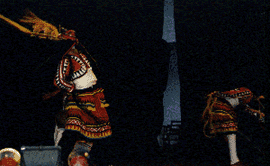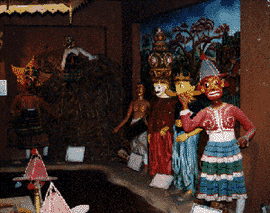 ART MUSIC & DANCE ART MUSIC & DANCE |

The most distinct architectural creations in Sri Lanka are its Stupas, which can be seen all over the country and are a constant reminder of the big influence of Buddhism in the Island. They have an oval shape, are mostly painted white and host a relic of Buddha.
Its Dutch and Portuguese buildings characterize colonial architecture. Galle has the most Dutch buildings; Kandy and Nuwara Eliya retain instead many typical countryside buildings from British colonial plantation owners.
Woodcarving, weaving, pottery and metalwork are all highly developed crafts. Sri Lanka is also renowned for its gems. Ambalangoda is the ideal place to see Sri Lankan masks; Ratnapura is the main producer of gems and also the centre of Sri Lanka's gem trade. You can visit mines and buy the stones directly from miners.
|  Music & Dance Music & Dance |

Dance in Sri Lanka is similar to Indian dance but emphasizes more on the acrobatics aspect, making extensive use of nimbleness and symbolism. Kandy is an excellent place to see the typical regional 'up-country dancing', a dance which evolved from village dances to attract deities; it is always accompanied by complex rhythms produced by drummers whose drums are called gatebere. Colombo or Ambalangoda are the places to witness the ritualistic exorcism of 'devil dancing'. Sri Lanka also has folk theatre that combines dance, masked drama and drumming. Exorcism rituals vividly recreate Sri Lankan folklore and are aimed at forcing the demon out of the diseased person.
|

